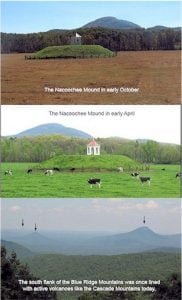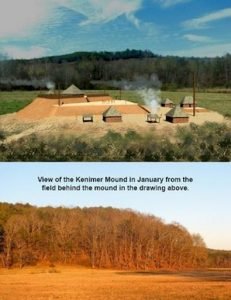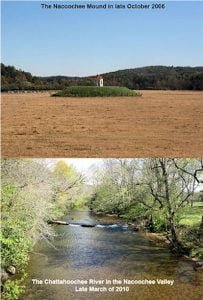Nacoochee Mound, Nation’s First Gold Rush
One of Georgias most beloved landmarks, the Nacoochee Mound, has a fascinating history For generations of Georgians, and now the endless line of Floridians seeking cool nights, the Nacoochee Mound has announced to passersby that they are REALLY in the mountains. It is the gateway to Helen, GA a tiny lumber mill hamlet that was remade into an alpine village and now is an international tourist attraction. One senses that mankind has been in the Nacoochee Valley a long, long time. It has that feeling of a place with history. Its true history will surprise you. There is a Georgia State … Read more






